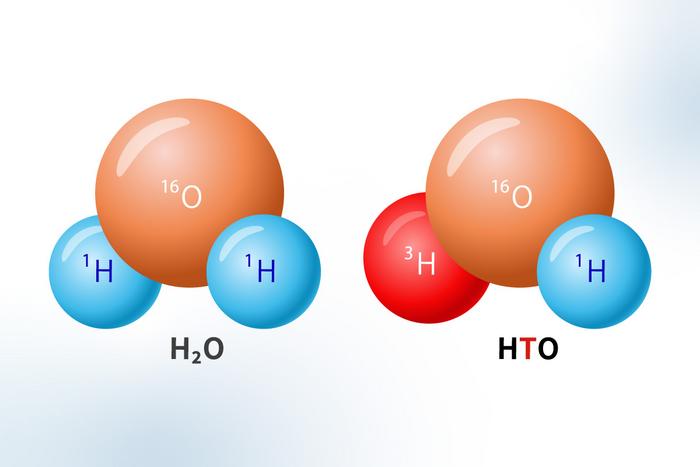Tokyo, Japan – In recent developments concerning the Fukushima Daiichi Nuclear Power Plant (FDNPP), the ongoing challenge of handling treated cooling water has prompted significant scientific inquiry. Following the catastrophic events of March 2011, operators have sustained efforts to cool the reactors, leading to the accumulation of extensive volumes of water treated through the Advanced Liquid Processing System (ALPS). While ALPS is adept at removing a broad range of radioactive contaminants, it treats tritium—a radioactive isotope of hydrogen—as a significant challenge. Tritium, being part of water molecules, carries a half-life of approximately 12.32 years and is notoriously difficult to separate from water.
The Japanese government’s announcement in 2021 regarding the planned discharge of this ALPS-treated water into the Pacific Ocean has ignited widespread concern. A proposed one-kilometer-long wastewater discharge tunnel is expected to facilitate this process, with the first planned releases having commenced in August 2023, projected to continue through 2050. This timeline emphasizes the critical need for scientific clarity regarding the environmental impacts of such a significant undertaking.
In a groundbreaking numerical modeling study, researchers have ventured to provide definitive insights into the implications of releasing ALPS-treated water containing tritium into the ocean. This study is a collaboration between experts from the Institute of Industrial Science at The University of Tokyo and the Institute of Environmental Radioactivity at Fukushima University. The research specifically focuses on understanding the spread and concentration of tritium in the Pacific Ocean as a result of these discharges.
.adsslot_Rs1ckHKoO3{ width:728px !important; height:90px !important; }
@media (max-width:1199px) { .adsslot_Rs1ckHKoO3{ width:468px !important; height:60px !important; } }
@media (max-width:767px) { .adsslot_Rs1ckHKoO3{ width:320px !important; height:50px !important; } }
ADVERTISEMENT
Utilizing a sophisticated global ocean model, the researchers conducted simulations to analyze how tritium, stemming from the discharged water, would potentially alter the existing background concentration of tritium in oceanic waters. The model demonstrated that the increase in tritium concentration in the Pacific Ocean would be approximately 0.1% or less than the background levels recorded in the vicinity of the discharge site. This level falls well below the detection threshold, rendering it nearly impossible to ascertain any significant difference that could be attributed directly to the ALPS-treated water itself.
Crucially, this finding indicates that the anthropogenic (human-caused) contribution of tritium from the discharged water is significantly lower than established safety standards outlined by the World Health Organization (WHO), which sets the limit at 10,000 Bq/L for drinking water. The concentrations observed in the simulations remained consistent with current monitoring data, which has shown negligible changes in tritium levels corresponding with the ongoing water discharge process.
The lead author, Alexandre Cauquoin, emphasized the importance of these findings in the context of prior studies, which often lacked comprehensive global simulations. “Our research addresses the gaps by offering a detailed exploration of long-term impacts that include climate change scenarios. This systematic approach enables us to assess how changes in ocean circulation, instigated by global warming, might influence the behavior of tritium released from Fukushima,” he articulated.
The researchers noted that while climate change and oceanic eddies—small whirlpool-like features in the water—can facilitate the movement of tritium throughout the Pacific Ocean, their simulations revealed a robust stability of tritium concentrations. The implications from this study suggest that the discharge of ALPS-treated water will not pose a significant radiological threat to marine life or oceanic chemistry in the long term.
Building on this foundational research, enhanced models that accurately trace the behavior of tritiated water within the global water cycle could serve diverse scientific interests. Understanding tritium dynamics is critical, as it can illuminate precipitation patterns, ocean circulation, and the movement of moisture sources throughout the environment. The relevance of this study extends beyond immediate concerns about nuclear wastewater discharge; it paves the way for future research and enhances predictive capabilities in climate modeling.
Furthering the dialogue on environmental safety and nuclear energy, this investigation into the effects of tritium discharge sets a precedent for responsible nuclear waste management. By systematically studying the long-term impacts under realistic discharge scenarios, researchers can significantly contribute to the evolving narrative surrounding nuclear energy—as one that is compatible with environmental stewardship.
This study exemplifies how transparent research practices grounded in rigorous scientific methodology can help assuage public concerns about nuclear energy’s role in our future. By addressing the inherent complexities of radioactive waste and its interactions with the broader ecosystem, this work reinforces the importance of science as a cornerstone of public policy.
As society grapples with the challenges of energy demand, climate change, and ecological preservation, studies such as this underscore the critical need for empirical evidence guiding energy strategies. Tapping into the intersection of nuclear energy, ecological health, and scientific integrity is vital in forging sustainable pathways for the future.
It is through this lens of innovation and responsibility that humanity can navigate the delicate balance between harnessing nuclear energy’s potential while safeguarding environmental integrity for generations to come.
Subject of Research: Tritium release from Fukushima Daiichi Nuclear Power Plant
Article Title: Ocean general circulation model simulations of anthropogenic tritium releases from the Fukushima Daiichi Nuclear Power Plant site
News Publication Date: 2-Jul-2025
Web References: https://doi.org/10.1016/j.marpolbul.2025.118294
References: The article published in Marine Pollution Bulletin
Image Credits: Institute of Industrial Science, The University of Tokyo
Keywords: Nuclear energy, Tritium, Environmental safety, Climate modeling, Ocean circulation, Fukushima Daiichi, Radioactive waste management, Water cycle dynamics, Marine ecosystems, Public policy.
Tags: ALPS treated water releasecooling water challenges at FDNPPFukushima Daiichi Nuclear Power Plantlong-term effects of tritiummarine ecosystem implications of tritiumnuclear wastewater managementocean environmental impactPacific Ocean wastewater dischargeradioactive contamination concernsradioactive isotopes in waterscientific study on tritiumtritium dispersion modeling





